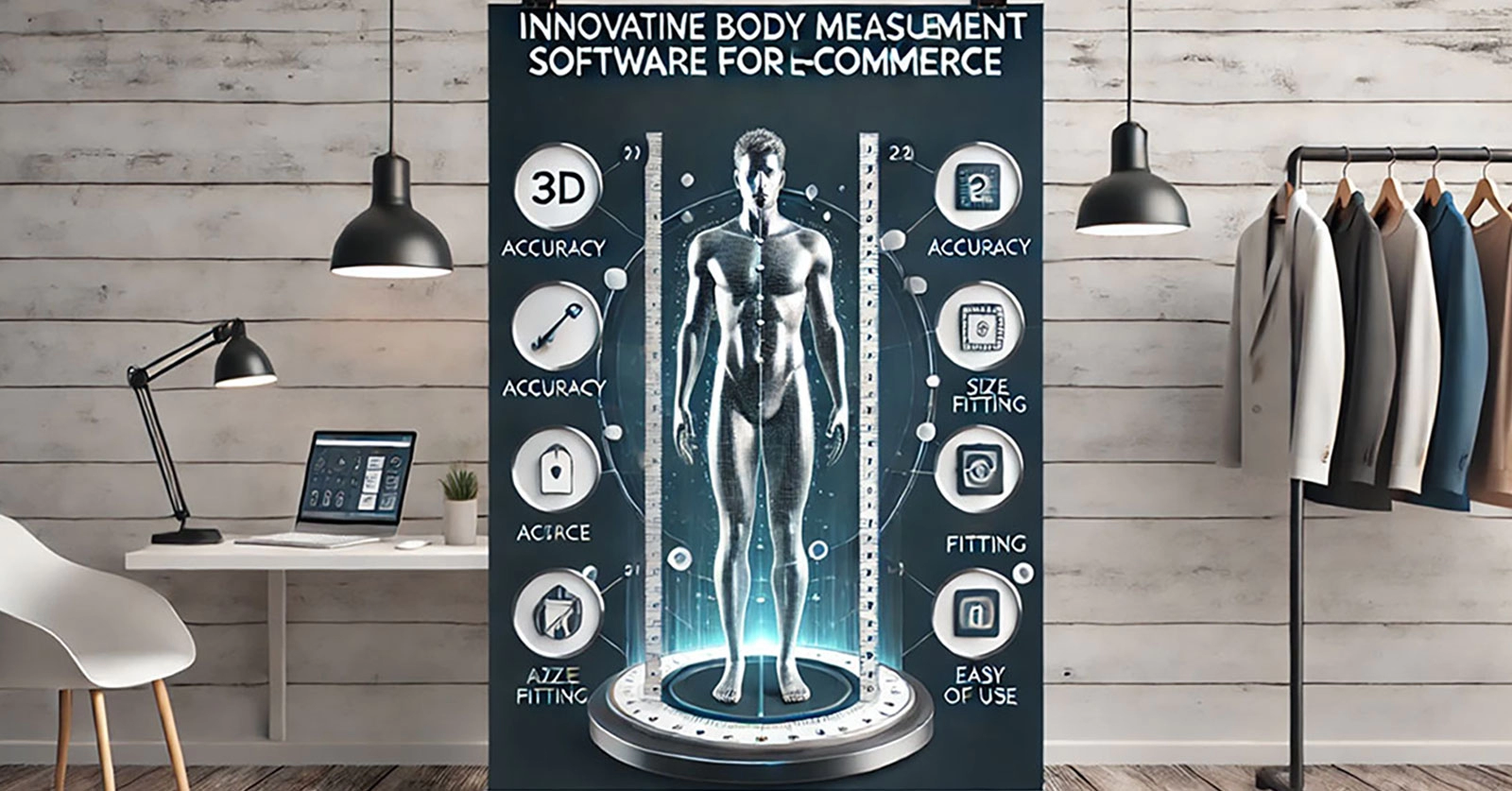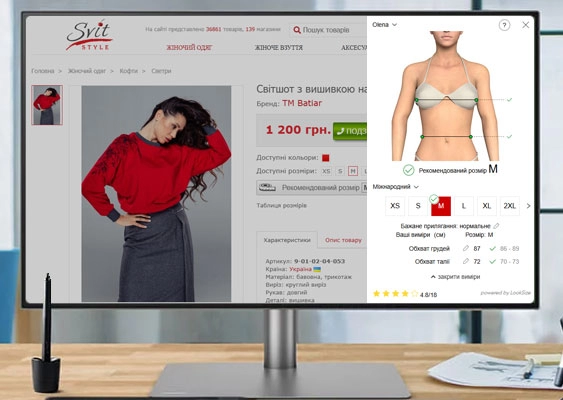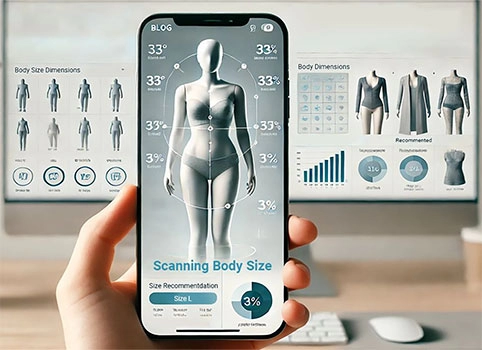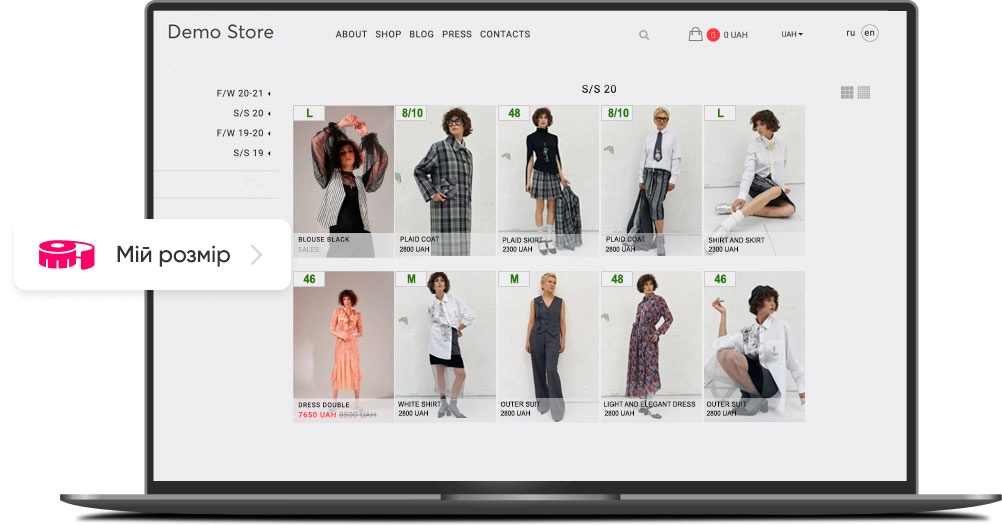How Body Measurements Software Enhances the E-commerce Experience

E-commerce is rapidly changing the way we shop, especially in the clothing and footwear industry. One of the main problems with online shopping is the uncertainty of choosing the right size. Body measurement software opens up new possibilities to solve this problem by providing an accurate and personalized approach to product selection. This not only simplifies the shopping process for customers, but also reduces the return rate, which has a positive impact on businesses.
What is body measurement software?
Body measurement technology is a solution that allows you to get accurate measurements of the user's body using mobile applications, webcams, online services, or special devices. The technology works on the principle of collecting information about a person's body and the clothes that fit them best, which is then analyzed by algorithms to determine the exact size and proportions of the body. The results are used to automatically select clothes that meet the individual needs of the client.
Understanding the details of body measurement technology
Body measurement app for clothing are rapidly improving through the use of innovative technologies and devices. Their main goal is to simplify the clothing selection process, improve sizing accuracy, and provide users with convenience. Let's take a closer look at each approach using modern tools, such as 3D body measurement software, AI-based programs, and other methods.
What types of body measurement apps are there?

1. Measurement with a centimeter
These are manual measurements, however, this classic method remains relevant because it provides the highest data accuracy. A person uses an ordinary centimeter to measure key parameters of their body (chest, waist, hips, etc.). The main advantage of this method is the unparalleled precision of the data if the measurements are performed correctly. However, it has a number of disadvantages: the process can be complicated and inconvenient, especially for those who do not know how to take measurements correctly. Measurements take time and sometimes require the help of another person. This method is often replaced by modern technology, such as body measurement apps for clothing or virtual body measurement simulators for free.

2. Prediction based on weight and height using AI
This approach uses artificial intelligence to estimate body size based on the main parameters: weight, height, age. For example, an AI-based body measurement tool analyzes the data entered by the user and predicts all the necessary body measurements. The main advantages of this method are the speed, simplicity, and high accuracy of predicting human body measurements, as well as the ability to try on clothes at any time and in any place. This approach is ideal for mass use due to its simplicity and integration with online stores.
This method has a few minor drawbacks, namely, it may be less accurate for people with non-standard physiques. Also, this method cannot predict several measurements that do not directly depend on weight and height, such as head circumference, finger length, palm circumference, and foot measurements.

3. Determining parameters from a photo
One of the most modern ways is to use photos to measure body parameters. A virtual body measurement simulator analyzes a photo to create a model of the user's body. The main advantage of this method is innovation, as the technology allows you to visualize body measurements without resorting to complex measurements.
However, it also has a number of disadvantages:
- low accuracy of human body measurements;
- confidentiality (users have to provide their photos to third-party platforms, which raises data privacy issues);
- it is difficult to take a high-quality photo without assistance (wrong angle or poor lighting can affect the results).
- does not determine foot and head measurements.

4. 2D and 3D scanning
3D body measurement software uses special cameras or sensors to create highly accurate models. A virtual body measurement simulator built on the basis of 3D scanning allows not only to determine the parameters, but also to create an interactive visualization of the body. However, this option has a number of significant drawbacks that need to be taken into account, namely
- 3D scanning equipment is expensive and inaccessible to the average user;
- body measurement tools may be available only in specialized centers;
- this is still an unattainable option for most consumers;
- the inability to integrate this solution into e-commerce of clothing and footwear.
The importance of accurate sizing in e-commerce
In recent years, e-commerce has become an integral part of the lives of millions of people. While online stores offer a wide range of products and convenient shopping, one of the biggest challenges in this area is accurate sizing, especially when it comes to clothing and footwear. Sizing mistakes can lead to customer frustration, increased returns, and business losses. Accurate sizing not only solves this problem, but also significantly improves the overall customer experience.
Accurate sizing allows customers to receive a product that perfectly fits their needs. Customers no longer have to worry about whether the clothes will be comfortable or fit. This significantly increases the satisfaction of the purchase, and a satisfied customer is more likely to return to the store in the future.
Modern tools, such as body measurement software, allow for accurate measurements of users' bodies, making it easier to make a choice. This also contributes to brand trust, as customers see that fashion brands are taking their needs into account.
Modern shoppers value a personalized approach. Integrating body measurement technology allows stores to create personalized offers. The use of body measurement software creates a new level of convenience.
Also, do not forget that these tools solve the biggest problem when shopping for clothes and shoes online - “Returns”. Statistics show that in the field of clothing and footwear, up to 30-40% of purchases are returned due to the wrong size. This creates significant costs for the business: logistics, checking goods, reselling them, etc. Accurate body measurements reduce the number of returns because the customer receives a product that matches their parameters.
Accurate sizing is the key to success in e-commerce. It not only increases customer satisfaction, but also helps to optimize business processes, increase profitability, reduce costs, and create competitive advantages. Body measurement tools, such as LookSize virtual fitting software, open up new opportunities for customers and businesses. The introduction of such technologies is already a mandatory standard for successful market operations.

LookSize is an innovative software for accurate body measurement that significantly improves the online shopping experience. Its integration into e-commerce processes solves the main problems associated with sizing and offers a number of benefits for both customers and businesses.
1. Improved sizing accuracy
LookSize offers a comprehensive approach to trying on clothes online. It allows shoppers to determine their exact parameters by using AI-powered weight and height predictions, but the user can edit the predicted measurements manually. Thanks to this, the system selects the most optimal size for each customer, minimizing errors. We consider this method the most optimal because it is simple and easy to use at any time, and it is much more accurate than other innovative sizing methods. Accuracy plays a key role in this area. In addition, customers receive personalized recommendations, which greatly simplifies the selection process and helps customers to make purchases with confidence.
2. Reducing the number of returns
One of the key advantages of LookSize is a significant reduction in the rate of returns of goods that do not fit. The costs of logistics and processing returns are reduced. According to analysts, correct sizing with LookSize reduces the number of returns by 25-35%.
3. Increase the conversion rate of purchases
LookSize helps increase conversion rates in online stores. Customers who are confident in their choice of size are more likely to complete a purchase and personalized recommendations encourage customers to buy more.
4. Easy integration
LookSize offers easy integration with e-commerce platforms such as Shopify, Magento, WooCommerce, Horoshop, BigCommerce, PrestaShop, OpenCart, Wix, Squarespace, etc. Setting up and launching the service does not take more than 24/48 hours. All settings are made by us on our side, the store requires a minimum of time, 10-15 minutes. The software is easy to customize and adapt to any online store. The system supports different languages and currencies, which makes it universal for the international market. You can leave a request for connection here.
Integrating LookSize into e-commerce opens up new business opportunities and creates a competitive advantage. Accurate sizing, reduced returns, improved customer experience, and increased sales are just some of the benefits that stores and customers receive. LookSize is a tool that makes online shopping easier, more convenient and more efficient.
Conclusion
Body measurement tool plays a key role in the development of e-commerce, especially in the clothing and footwear industry. It not only simplifies the process of sizing, but also increases order accuracy, minimizes returns, and significantly improves the customer experience. Thanks to such tools, customers receive personalized recommendations, which makes online shopping more comfortable and efficient.
Among all the available solutions, LookSize stands out as the best choice for online body measurement and sizing. The platform provides an innovative approach, ease of use, high accuracy, and integration with various e-commerce systems. LookSize allows brands not only to improve customer service but also to optimize business processes, increasing their competitiveness in the market.
Implementation of LookSize is an investment in the development of your store/brand that combines technological innovation with customer care.

